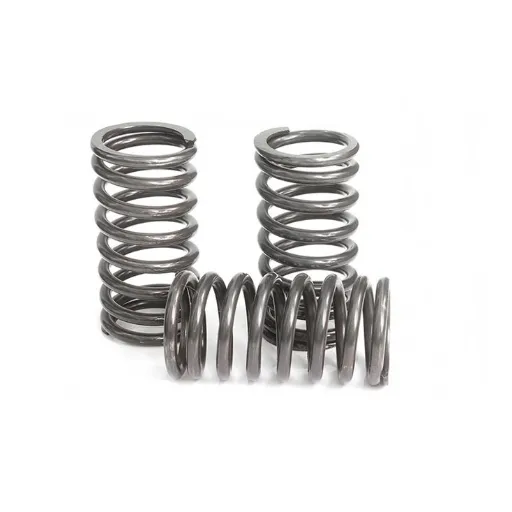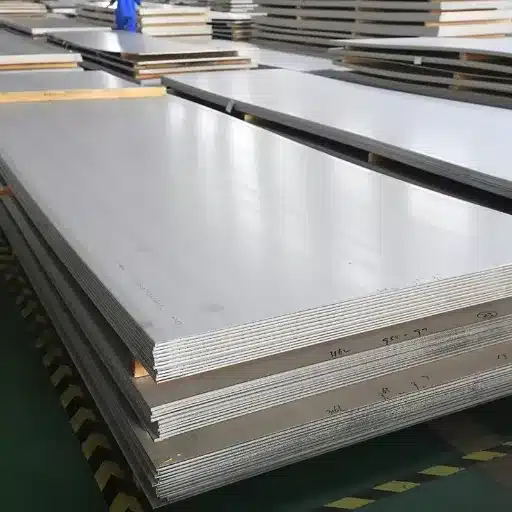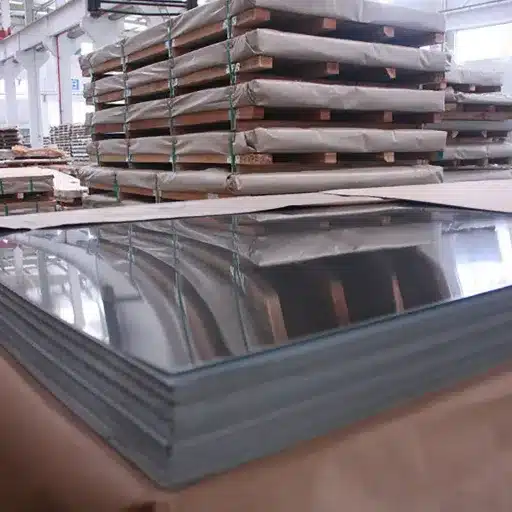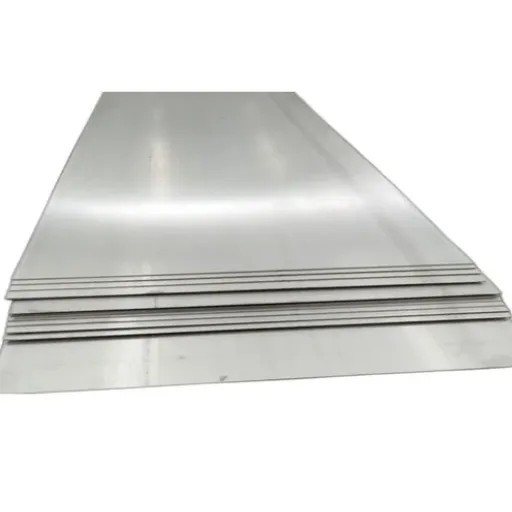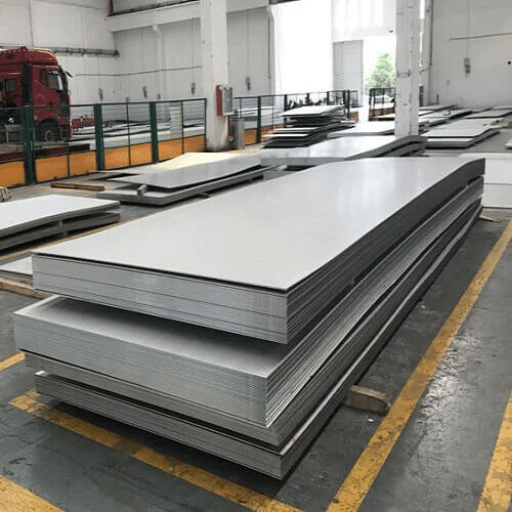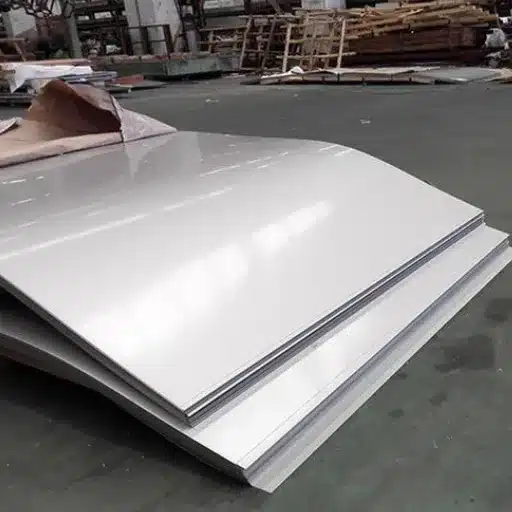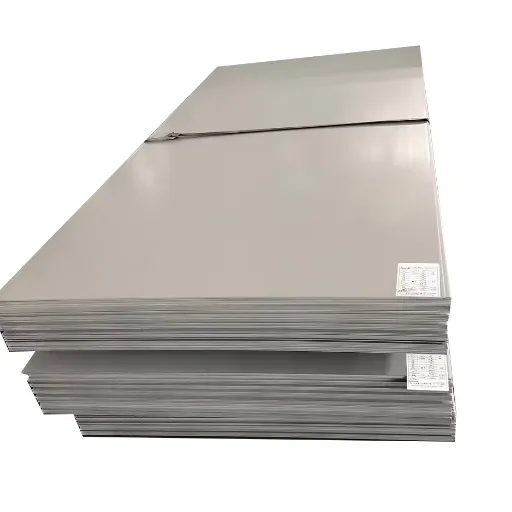Spring steel finds extensive use as an assembly of materials due to all industrial and everyday applications. It has distinguishing characteristics, namely, elasticity and resilience. It is purposely designed to return to its initial position after bending, twisting, or deforming, thus creating springs, washers, or other load-bearing components. What, therefore, gives spring steel its uniqueness, and how does it stand up to severe working conditions? This article gives a thorough investigation into the fundamental properties, myriad applications, and types of spring steel to give you complete insight into its abilities and why it remains a favorite choice in engineering and manufacturing. Be it an engineer or just someone interested, this paragraph will take you through the amazing qualities of spring steel.
Defining Spring Steel
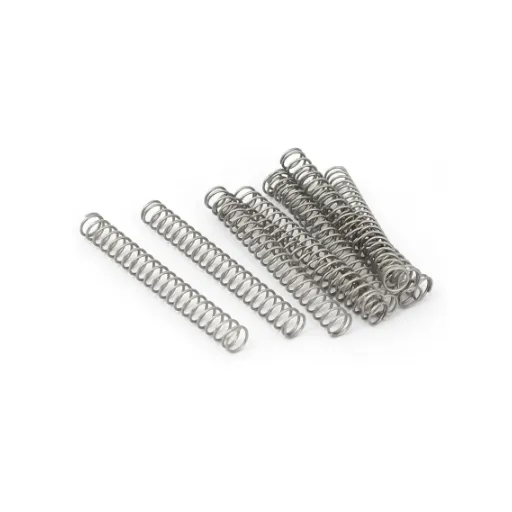
What is Spring Steel?
Spring steel is a special steel type used to restore its form after considerable bending or twisting, thereby giving it high resilience and elasticity. The design process, including the composition and heat treatments, provides for a balance of tensile strength and flexibility. Generally speaking, spring steel contains medium to high carbon with alloying elements such as silicon and manganese to increase its durability and fatigue resistance.
An ability to withstand repeated stresses without plastic deformation or fracture is a key characteristic of this material when needed for a load or tension to which it is subjected and must perform accurately. Resist deformation while absorbing and releasing energy efficiently (due to its high yield strength), that is exactly the kind of metal need in suspension systems, mechanical springs, lock mechanisms, and similar applications. Spring steel also has great wear resistance, which helps it maintain its surface properties even in rough conditions.
Given that it is highly versatile and useful across a huge spectrum of industries, including automotive, aerospace, and construction, spring steel is used in the making of leaf and coil springs, cutting tools, saw blades, and certain types of medical instruments. This material is found useful in engineering and industrial sectors due to its predictable performance and ease of formation into complex shapes, all while maintaining strength.
Importance of Spring Steel in Engineering
Spring steel goes into a lot of things in engineering because of its myriad of mechanical properties. The high yield strength and toughness let it withstand extreme stresses instead of suffering any permanent deformation, often required in components subjected to repeated loads. This is particularly useful in aid to automotive engineering, where supension systems have spring steel to absorb shocks and maintain vehicle stability.
Spring steel finds its usages further in the aerospace realm, where precise and durable materials are necessitated in the greatest degree. In fasteners, wing assemblies, and lightweight mechanisms requiring flexibility and resilience, it becomes indispensable. The capacity of the material to recover its shape after deformation under stress assures safety and reliability in strenuous aviation conditions.
Another prominent application of the spring steel is made in the building sector. It is used in tools and structures requiring elasticity and strength, like concrete reinforcement systems and industrial saw blades. Adaptability of spring steel, combined with wear and fatigue resistance, guarantees the best possible engineering performance in a variety of applications. This nature enables the steel to be a must-have for every modern industrial and structural undertaking.
Comparison with Other Steel Types
Spring steel is compared with mild steel, tool steel, and other types of alloy steels in terms of properties like elasticity, yield strength, hardness, and toughness.
| Steel Type | Elasticity | Yield | Hardness | Resilience | Fatigue | Applications |
|---|---|---|---|---|---|---|
| Spring Steel | High | High | High | High | High | Springs, tools |
| Mild Steel | Low | Low | Low | Low | Low | General use |
| Tool Steel | Moderate | Moderate | Very High | Moderate | Moderate | Cutting tools |
| Alloy Steel | Varies | Varies | Varies | Varies | Varies | Structural parts |
Unique Properties of Spring Steel
High Yield Strength
Spring steel is famous for its high yield strength, which means that it is able to withstand considerable stress without undergoing plastic deformation. This extraordinary property renders it suitable for applications in which loading and unloading cycles are frequently repeated without failure. Here are five major points that reveal the high yield strength of spring steel:
- Stress Resistance: Spring steel resists applied forces up to 1,200 MPa (depending on grade), ensuring long performance in situations where severe stresses persist.
- Elastic Limit: The elastic limit of spring steel is extremely high, so it does not weaken while flexing under load; it snaps back to the original shape as soon as the load is removed, without developing any plastic deformation.
- Durability in Cyclic Loading: Spring steel can withstand millions of cycles without losing its structure, so it’s commonly used in products such as car suspensions or industrial springs.
- Temperature Stability: Spring steel keeps its yield strength at high temperatures, generally up to 300°C, ensuring stable performance in heat-demanding applications.
- Low Fracture Propensity: Bearing very high and instantaneous fracture toughness in the presence of any sharp stress concentration, spring steel does not develop cracks.
Each of these attributes allows spring steel to be versatile and reliable in different rigorous industrial and manufacturing situations.
Excellent Elastic Limits
These amazing elastic limits define the spring steel’s ability to revert to its shape after deformation up to a definite limit. This property is essential for parts under repeated or variable loads. Here are five points on the excellent elastic limits:
- Yield Strength: Spring steel displays a yield strength between 1500 MPa and 2000 MPa, allowing it to undergo a great deal of stress without deformation.
- Elastic Modulus: It has an elastic modulus of approximately 200GPa, which provides a precise measure of this stiffness in opposition to being elastically deformed by the application of a load.
- Fatigue Resistance: This material is made to bear millions upon millions of cyclic loads, thus making it highly suitable for suspension systems and industrial springs.
- Resilience: Spring steel is highly resilient, featuring an immense capacity to absorb and release energy within the elastic range with efficient energy return or release without damages.
- Dimensional Stability: Spring steel maintains constant dimensional properties even under severe loads or heat, permitting the durability and reliability of precision-engineered components.
Together, these properties shall make an option for the dynamic applications demanding geometrically spring and heavily mechanical.
Fatigue Resistance
Known primarily for their marvelous fatigue resistance, spring steels are beneficiary when in locations that are in instances of repeated cyclic loading. The following points set forth detailed factors on the fatigue resistance of spring steel:
- High Stress Endurance: Spring steel is known for carrying cyclic stresses close to 50 percent of its tensile strength without the occurrence of failure. This is an important feature for parts such as suspension springs and torsion bars.
- Microstructural Stability: Spring steel has a fine grain structure that, through proper heat treatment, resists crack initiation and propagation under cyclic stress application.
- Load Frequency Tolerance: Laboratory tests have confirmed that spring steel can withstand several million load cycles at a considerable frequency inside high-performance dynamic systems.
- Surface Finish Impact: An excellent surface finish usually acquired through polishing or shot peening serves high fatigue resistance by eliminating stress concentrations and the possibilities of forming micro-cracks.
- Temperature Resilience: Thanks to its alloy composition, spring steel continues to exhibit fatigue resistance even at rather high temperatures, as this prevents thermal cycling from degrading its mechanical properties.
Together, all these factors lend strength and reliability to spring steel in applications ranging from automotive systems to industrial machinery and, hence, further ensuring excellent service under harsh cyclic conditions.
Applications of Spring Steel
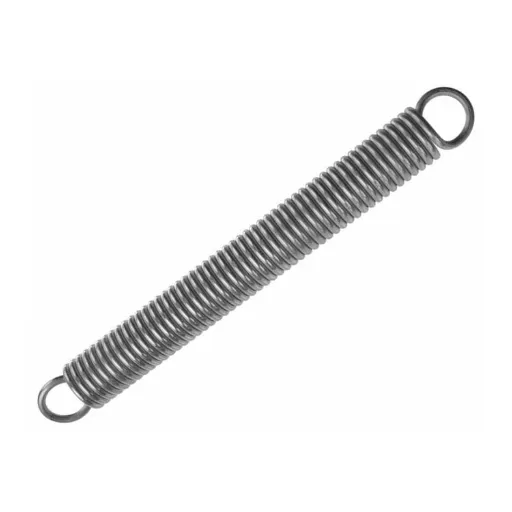
Automotive Suspensions
Due to its extraordinary strength, flexibility, and resistance to fatigue, spring steel developed into a key element for the construction of modern automotive suspension systems. These properties guarantee that the components will endure continual stress and motion during their lifetime. Here, elaborated are five important applications of spring steel in automotive suspensions:
Leaf Springs
Leaf springs are commonly used in trucks and vans to provide a smooth ride while levying heavy loads on them. High tensile strength and elasticity are the prime qualities of spring steel, which is why it is used in making leaf springs and thus offers long service life and even performance.
Coil Springs
Coil springs, central to both front and rear suspension systems, absorb shocks and impart stability to the vehicle. The resiliency of spring steel allows the coil springs to compress and rebound time and again and yet avoid any deformation from absorbing vibrations.
Torsion Bars
Torsion bars operate as levers in the suspension arrangement, utilizing the twisting ability of spring steel. Its high resistance to shear stress allows torsion bars to resist twisting forces and retain their original shape.
Stabilizer Bars (Anti-Roll Bars)
Stabilizer bars or anti-roll bars are vitally important in keeping vehicle body roll to a minimum during cornering. The stiff and elastic characteristics of spring steel provide a solid and resilient link between suspension components via these bars, thereby increasing handling and safety.
Control Arms with Integrated Springs
Certain modern suspension designs use spring steel in the control arms to improve their load and vibration absorption characteristics. This exertion of dual functionality reduces overall system weight and enhances performance, putting to good use the flexibility and strength of spring steel.
These applications clearly highlight the inevitable role spring steel plays in automotive suspension systems, bringing better ride actualization, vehicle handling, and safety.
Industrial Springs
An industrial spring is very important for all sorts of machinery and systems, as it stores mechanical energy and resists force. These springs have been carefully fabricated for certain performance to ensure that they will be reliable, have a long life, and work efficiently under certain operating conditions. Some of the more common industrial springs and their properties are given below:
Compression Springs
Compression springs are open-coil-helical springs designed to oppose forces of compression. They are used in automotive suspension, valves, and industrial equipment for impact absorption and for establishing separation in mechanical systems. These are generally made of carbon steel or stainless steel. They are capable of applying loads starting from a few ounces up to several tons.
Extension Springs
Extension springs hold energy by resisting stretching forces. They usually have hooks, loops, or end fittings for attachment and may be used in garage door assemblies, agricultural machinery, or heavy-duty towing systems. They must show high tensile strength for demanding-working-environments.
Torsion Springs
As the torsion springs operate by exerting torque or rotary forces, the best applications for them include hinges, levers, and counterbalance mechanisms. They are also very versatile and can be designed for both light applications such as the strength for a clipboard clasp and industrial applications such as being used in a conveyor belt.
Conical Springs
Conical springs, also called taper springs, are made with a conical shape that allows them to be compressed into a nearly solid operating position. This design offers maximum space efficiency and resistance to buckling, making the conical spring suitable for transmission systems and advanced clutches.
Leaf Springs
Leaf springs are flat layered springs generally used in the suspension of heavy vehicles such as trucks and trailers. Made from high-strength spring steel, they offer the best load distribution with the least vibration and road shocks.
These spring types serve as the basis for the functioning and efficiencies of innumerable industrial work processes and stand as testimonials to engineering precision and advances in material science.
Precision Instruments
The measure precision instruments for industries where exactness, accuracy, and measurements are the underlying facets. Developing with fine features of engineering and ornamented with fine craftsmanship, these instruments stand by their assurance of reliability and exact result every time. Their very existence is imperative in manufacturing, healthcare, engineering, various scientific fields, and research. The list below describes five of the most commonly used precision instruments in various industries: what they do and how they function:
🔧 Micrometers
For small dimensions, micrometers give very close priorities such as thickness or diameter of objects. These are usually graduated down to 0.01 mm or 0.001 inch and are used very widely in machining and mechanical engineering.
📏 Calipers
Calipers are versatile measuring instruments for measuring the distance between two opposite sides of an object. Digital, dial, or Vernier calipers can measure internal and external dimensions as well as depths, most commonly to an accuracy of 0.02 mm.
🎯 Coordinate Measuring Machines (CMMs)
A CMM is used to measure the exact geometry of physical objects by sensing discrete points on the surface of the object. Depending upon application and design, these machines provide measurement accuracy of anywhere from 0.1 to 10 microns.
📊 Dial Indicators
A dial indicator is designed to measure small linear distances or displacements with great precision. It is used for alignment purposes with an accuracy of 0.01 mm and in machining to ensure close tolerances.
🔬 Spectrophotometers
Spectrophotometers analyze and measure the intensity of light at different wavelengths that are either absorbed or transmitted by the sample. Measuring wavelengths to a great precision down to nanometers, these instruments find application in chemistry, biology, and material science.
These precision measuring instruments are proof of how aspects of correct and reliable measurement in their own respective fields are paramount for quality control, research, and technology development.
Industries Utilizing Spring Steel
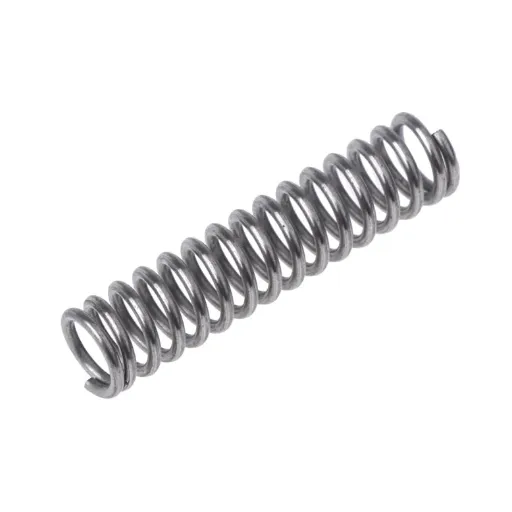
Automotive Industry
Spring steel is the backbone of automotive engineering, given the subject’s unique , such as an extremely high yield strength, elasticity, and durability. The material finds use in manufacturing suspension elements like coil springs, leaf springs, and stabilizer bars needed to maintain vehicle stability and shock absorption. Essentially, it is a spring steel with the exact set of mechanical properties for repeated stress without permanent deformation, hence making it a requisite super service for critical load-bearing applications and motion controls.
With such metallurgical and manufacturing advancements, the modern automotive world has witnessed the engineering of specific spring steel alloys to cater to high demand. In other words, vanadium steels and silicon-manganese alloys are being used more and more, amid enhanced heat resistance and excellent fatigue resistance, to qualify performance requirements present in highly stressed conditions, such as heavier vehicles and performance sports vehicles.
As the automotive sector moves toward electric vehicles (EVs), demanding lightweight and durable materials, the spring steel tends to meet evolving design concerns to improve energy efficiency along with structural integrity.
Aerospace Sector
The aerospace industry requires materials that satisfy the highest strength-to-weight ratio specifications, precision, and resilience at extreme operating conditions. It is practically unaltered from the use of spring steel in aerospace applications due to its unique set of mechanical properties-high tensile strength, good elasticity, and resistance to deformation under repeated cycles of stresses. These properties render the metal suitable for landing gear components, engine systems, and structural elements for both aircraft and spacecraft.
Metallurgical development has yielded spring steel grades specially suited to meet the harsh thermal and mechanical loads experienced in aerospace conditions. For instance, the newer grades are much more tolerant of thermal cycling and corrosion-an important matter concerning the longevity and functioning safety of materials from very high altitude to prolonged flight duration. Moreover, the use of spring steel in light composite assemblies has promoted fuel efficiency and emission reductions, satisfying both economic and environmental interests in the industry.
In line with its transition toward innovation in reusability of spacecraft and modern aviation technologies, the aerospace industry also continues to evolve the spring steel with next-generation alloys and manufacturing techniques such as additive manufacturing; hence ensuring that it remains a critical material upon which the further sustenance of enhanced performance, sustainability, and operational reliability in aerospace applications can be built.
Manufacturing and Construction
The modern-day infrastructure demands are fulfilled by a symbiotic relation between certain materials and technologies. Actuating the crucial interface of structural integrity and loading capacity between modern edifices and heavy machinery, steel, with its variants including the higher-strength grades of spring steel, assumes prominence. At the apex, then, are precision machining and heat treatment processes applied to steel, in order to enhance strength and resistance to fatigue. Such processes and associated technologies have made it possible for materials to be subjected to very demanding conditions, especially in design projects involving skyscrapers, industrial plants, and large transportation infrastructures.
Apart from this, additive manufacturing (3D printing) technology has changed the prevailing manufacturing methods in construction environments. Additive manufacturing enables the production of custom steel components with minimal waste of material, improving efficiency and reducing environmental impact. This technology increases the ability to work with complex geometries that could never be made with conventional approaches, thus laying the groundwork for more innovative architectural and structural solutions. This allows lead times to be shortened, an essential factor for working under the tight deadlines imposed by urban development.
The construction industry has been a beneficiary as well of advances in smart materials and sustainable. And, from a material perspective, smart systems now include modern spring steel alloys formulated for maximum corrosion and environmental resistance so as to limit maintenance costs in the long run and increase the service life of structural components. From an application perspective, combining this technological evolution with BIM facilitates accurate deployment of materials and thus reduces wastage of resources. These innovations in combination make manufacturing and building as engines of advancement, implying the importance of advanced materials and state-of-the-art technology in the future of sustainable development.
Comparative Analysis with Other Materials
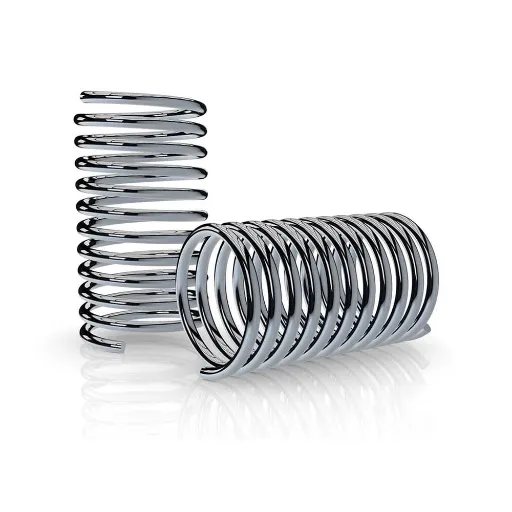
Mild Steel vs. Spring Steel
Even the softest of mild steels is not easily bent back and forth. In contrast, season-steel, being as hard and resilient as it is, slips back into its original form after being straightened and darted.
| Aspect | Mild Steel | Spring Steel |
|---|---|---|
| Flexibility | Low | High |
| Strength | Low | High |
| Durability | Low | High |
| Toughness | Low | High |
| Endurance | Low | High |
| Affordability | High | Moderate |
| Workability | High | Moderate |
| Usage | General use | Springs, tools |
Tool Steel vs. Spring Steel
Tool steels are known for being highly hard and wear resistant, whereas spring steels excel in elasticity, resiliency, and wear-fatigue resistance.
| Aspect | Tool Steel | Spring Steel |
|---|---|---|
| Hardness | Very High | High |
| Elasticity | Moderate | High |
| Resilience | Moderate | High |
| Fatigue | Moderate | High |
| Durability | High | High |
| Machinability | Low | Moderate |
| Applications | Cutting tools | Springs, tools |
Choosing the Right Steel for Your Application
When selecting a steel for a certain application, the functional requirements of the end-product must be taken into consideration. I start to look at the mechanical properties needed, whether it be toughness, elasticity, or wear-resistance. When a tool is involved in an application where the criterion for high hardness and wear resistance is in cutting applications or dies, this is my selection-tool steel. It imparts high-hardness and, thus, longer life under heavy wear, but this comes at a stricter compromise of reduced elasticity and machinability.
Conversely, I tend to use spring steel when high resiliency, elasticity, and wear fatigue are quintessential, such as in springs or flexible tools. This extra rigidity means it can handle cyclic stress without plastic deformation, thus serving components that absorb and release energy. Its machinability is relatively moderate compared to tool steel, allowing a good compromise for these applications where motion is involved.
Basically, to pick the correct steel, one must first consider those trade-offs in properties in the working environment and under mechanical demand. For static or nearly non-dynamically loaded parts, tool steel, by virtue of its unparalleled hardness, serves one best. Whereas, for parts subjected to repeated loading where resilience is required, the spring steel whose elasticity is tuned for this kind of application will perform satisfactorily. This careful consideration ensures that the steel chosen will fulfill the functional and hence life span expectations of the application.
References
-
Harvard ADS (Astrophysics Data System):
- Fatigue failure of SUP-9 spring steel
This source discusses the properties and applications of SUP-9 spring steel, focusing on its resistance to deformation and vibration relief.
- Fatigue failure of SUP-9 spring steel
-
Journal of Materials Engineering and Performance:
- Influence of Deep Cryogenic Treatment on the Mechanical Properties of Spring Steel
This paper explores the mechanical properties of spring steel, particularly in the context of leaf springs for heavy-duty vehicles.
- Influence of Deep Cryogenic Treatment on the Mechanical Properties of Spring Steel
-
Portland State University Scholar Archive:
- X-ray Determination of Compressive Residual Stresses in Spring Steel
This study examines the use of 5160 steel in automotive components like leaf and coil springs, detailing industrial heat treatment processes.
- X-ray Determination of Compressive Residual Stresses in Spring Steel
-
University of Illinois Materials Science Resource:
- The HIGHLANDER Sword Shopper’s Guide – Grades of Steel
This resource provides an overview of spring steel grades and their applications, including automotive and industrial uses.
- The HIGHLANDER Sword Shopper’s Guide – Grades of Steel
- Click here to read more.
Frequently Asked Questions (FAQ)
Q: What is spring steel?
A: Spring steel may be considered a variety of steel that is supposed to yield resilient and adaptable, able to return to its original shape after deforming. This characteristic results in its fabrication into different kinds of springs across industries for myriad uses.
Q: What are some common types of spring steel?
A: Many grades of spring steel exist, including high carbon steels like 1095, which essentially have carbon contents that influence their strength and hardness. Other types include those of medium carbon content and low alloy, each with somewhat different properties useful in particular applications.
Q: How is spring steel made?
A: Usually, spring steel is heat-treated by hardening and tempering. This process results in higher yield strength and fatigue resistance, rendering it appropriate for high-grade applications. Then, fabrication methods such as annealing may be adopted to increase ductility.
Q: What are the good applications of spring steel?
A: The varied applications range widely from car parts such as aircraft landing gear to everyday things like binder clips and lock picks. Bearing excellent resistance to fatigue with the ability to return to their original shape renders spring steels successful in numerous commercial applications.
Q: What is the difference between annealed spring steel and hardened spring steel?
A: In the case of annealed spring steel, the application of heat treatment increases its ductility and more workable, the outcomes of which benefit further forming and fabrication. On the other hand, hardened spring steel has been hardened to enhance high strength and fatigue values and, therefore, is adapted to an application where it would have to resist breaking.
Q: Can spring steel be used in corrosive environments?
A: Corrosion protection, however, can be provided by particular treatments and coatings; if not, standard spring steel would tend to corrode to some extent. Also, the use of nickel or chromium may elevate the corrosion resistance of the spring steel through which it can be used in rough environments.
Q: Does carbon on the spring steel have any meaning?
A: The carbon content of spring steel is very important because it rather directly influences its hardness, strength, and ductility. Those spring steels with high carbon content such as 1095 have greater hardness and strength, whereas those with medium- and low-carbon content have greater ductility and formability, as required in given different applications.
Q: What is music wire, and how is it closely related to spring steel?
A: From the point of view that it is a high-carbon spring steel having very high tensile strength, music wire has high carbon content. It is used in various applications where precision and durability are required, such as piano wire and a variety of springs.
Q: How does the tempering process affect spring steel?
A: Tempering is a heat treatment process to reduce brittleness in hardened steel while maintaining adequate hardness. In spring steels, this process develops an overall balance of strength and ductility, which allow the steels to undergo repeated stress without being brittle.
Q: What is the role of fatigue strength for spring steels?
A: Fatigue strength is a very important property of spring steels since this determines the capacity of spring steels to resist cyclic loading without failure. Spring steels are made to have good resistance to fatigue so that they can resist stresses of repeated use in different applications without failure.
Conclusion
Spring steel stands as a testament to the remarkable advances in metallurgy and engineering, offering unparalleled elasticity, strength, and durability across countless applications. From automotive suspensions to aerospace components, precision instruments to industrial machinery, spring steel continues to be an indispensable material that shapes our modern world. Understanding its unique properties, applications, and comparative advantages enables engineers and manufacturers to make informed decisions that ensure optimal performance and longevity in their projects.

